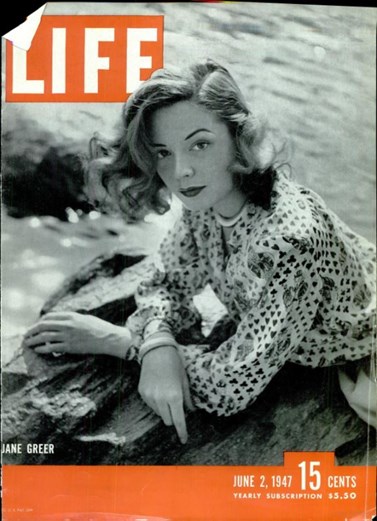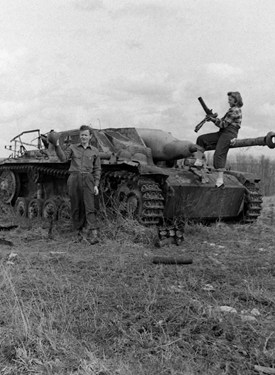BATTLEFIELD HONEYMOON
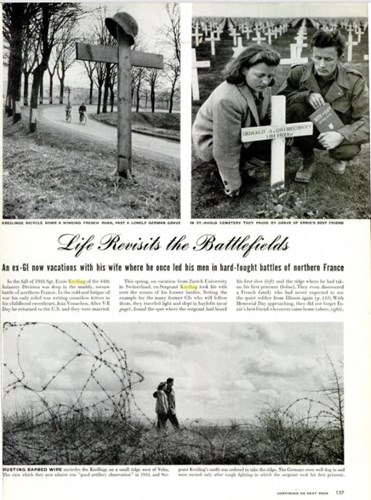
Browsing through a 1947 edition of LIFE magazine, I was struck by the story of Illinois born and bred Ernest Kreiling, and his boyhood sweetheart Jean. The story of their life-long relationship and post-war honeymoon made fascinating research, but it was the amazing collection of battlefield photographs that prompted me to share this story wider.
So who were they, and what was their story?
Ernest, or Ernie as he was known, was an American soldier who served from 1941 until 1945. He landed in France at the latter end of 1944. He was awarded the Bronze Star for bravery during the fighting in North West Europe, a period of time that had a huge impact in the life of this young 21-year old America soldier. So much so, that in April 1947, he took the opportunity to revisit the battlefields of Europe with his wife. LIFE magazine photographer Anthony Linck chaperoned the couple as they explored war-ravaged France, Germany and Austria on bike. The result was this wonderful photo-diary of their honeymoon tour.
With the 114th in the E.T.O
Landing in France on 18 October 1944, Ernie was a Staff Sergeant in I Company, 3rd Battalion, 114th Infantry Regiment, part of US 44th Infantry Division. He fought in the Battle of Enchenberg, where the battalion’s motto of In Omnia Paratus (Prepared in All Things) was fitting. The 114th history goes back to the period of the Revolutionary War, where its roots were in the New Jersey Militia. The regiment served in the War with Spain in 1898 and the Great War, fighting in the Meuse-Argonne offensive. It didn’t leave the US to fight in the European Theatre of War (E.T.O) until September 1944 when it sailed on the U.S.S General J. R. Brooke. From Boston Harbour its next stop was Cherbourg where they trucked and trained through some of the recently captured, but much-bombed, region of France, liberated after the Normandy landings in June 1944. Its first taste of combat was on 18th October 1944 when it went into the line near Fort de Manonviller, and fired its first shots on the village of Veho. Stories of casualties soon became the norm as the 114th advanced, pushing the Germans back out of France through the Vosges Mountains and on the road to the Rhine.
During the war, where and whenever possible, Ernie would write to his childhood sweetheart, Jean Vonachen, vowing to marry her as soon as he returned home. Ernie survived the war and returned to the U.S. Just days after arriving in New York, on 20 July 1945, he kept his promised and tied the knot. Ernie and Jean were married.
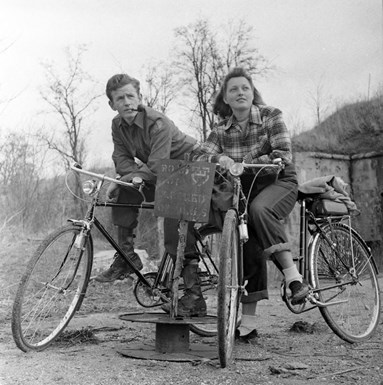
The return to Europe
Returning to Europe after the war, and whilst they were both at Zurich University in Switzerland, they decided to take a belated honeymoon. This would be a visit to the battlefields of France, Germany and Austria to retrace Ernie's former wartime service. They visited where he heard his first shot, took his first prisoner, saw his first enemy shell, sharing his wartime adventures with his wife, whilst also confronting his demons.
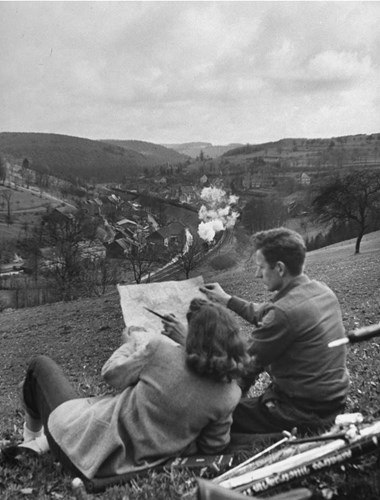
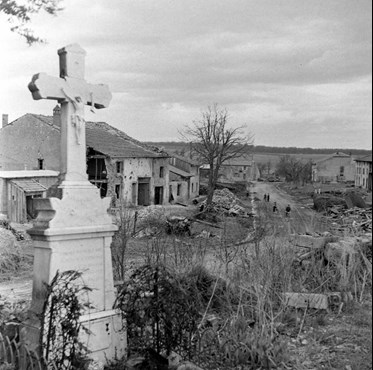
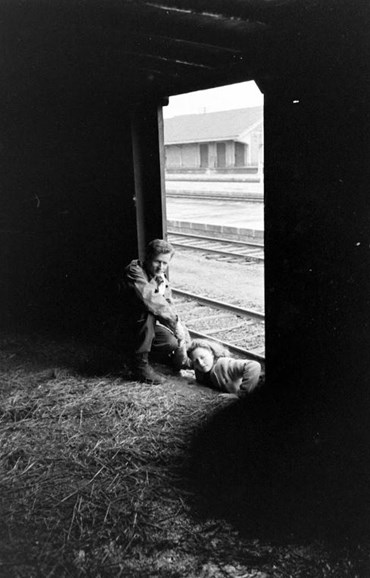
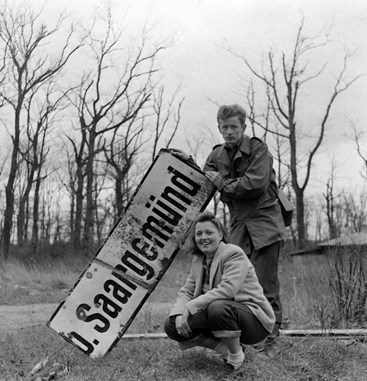
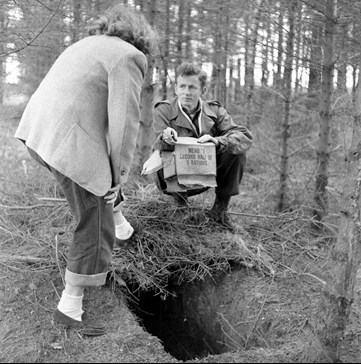
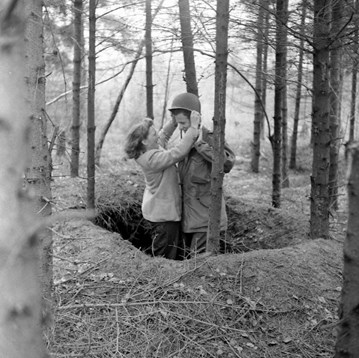
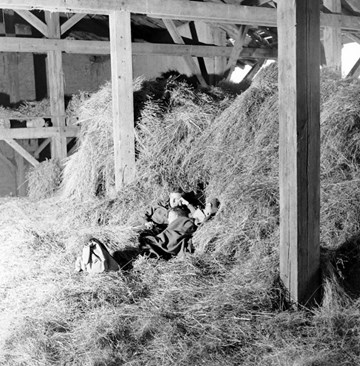
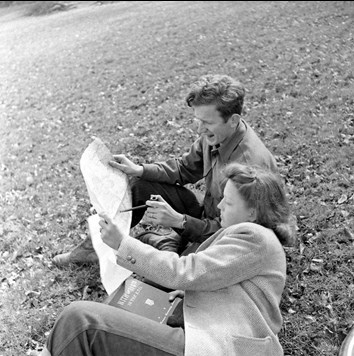
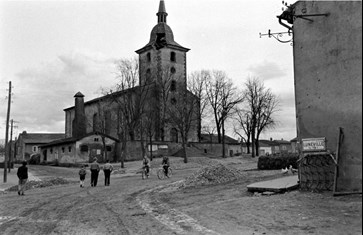
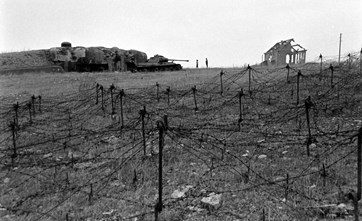
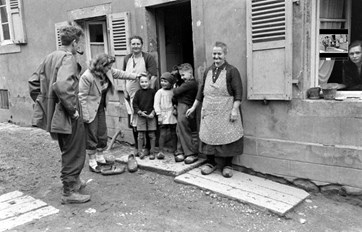
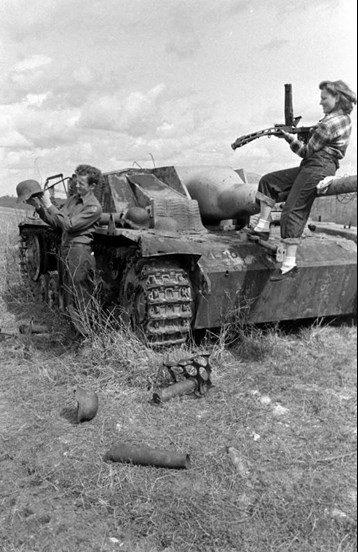
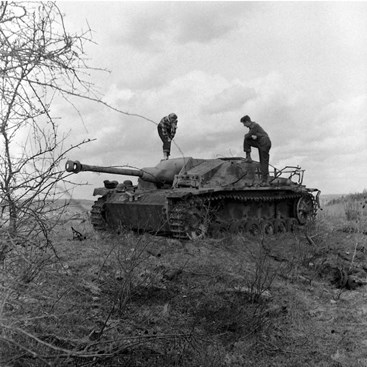
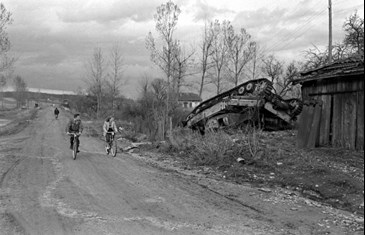
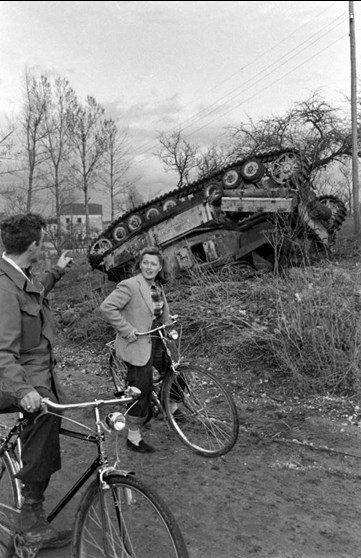
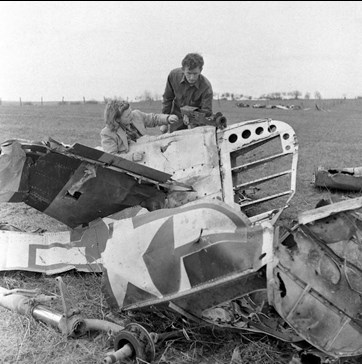
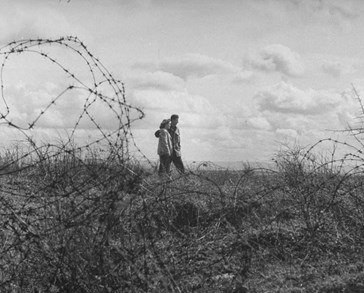
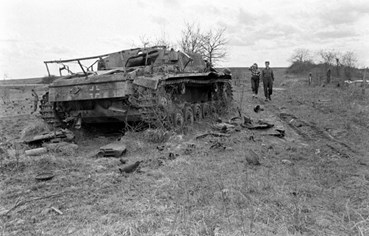
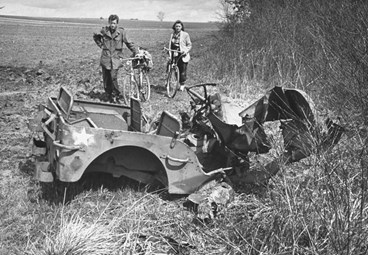
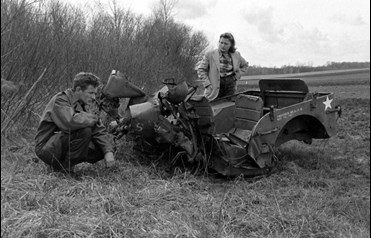
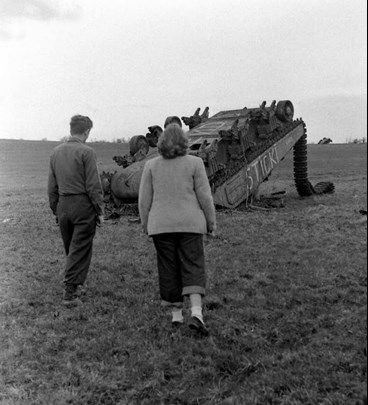
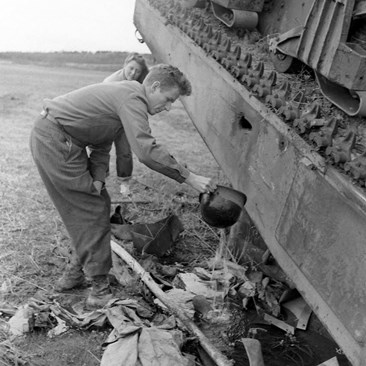
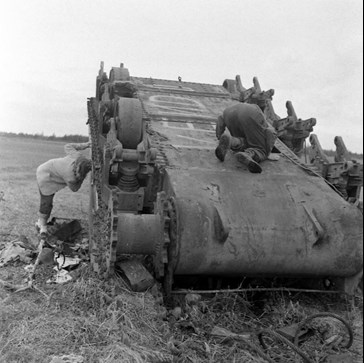
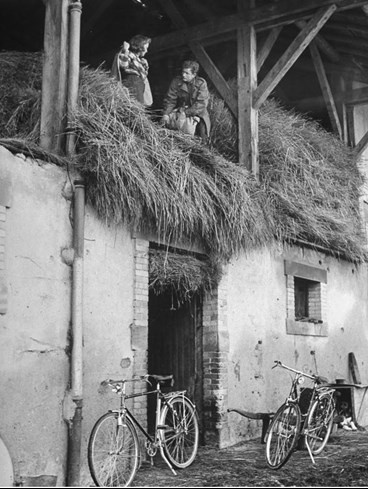
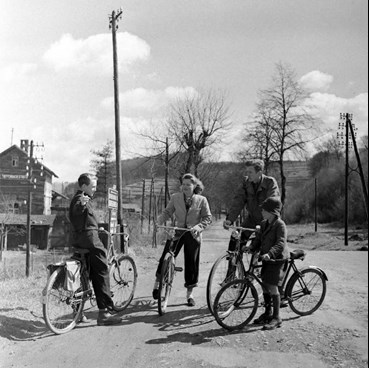
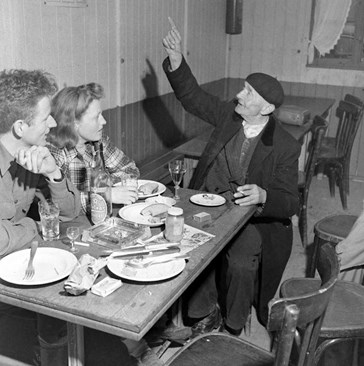
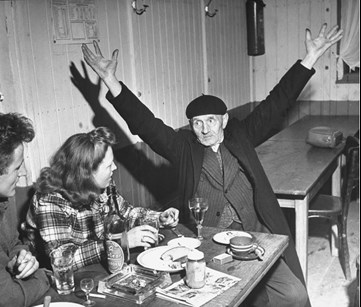
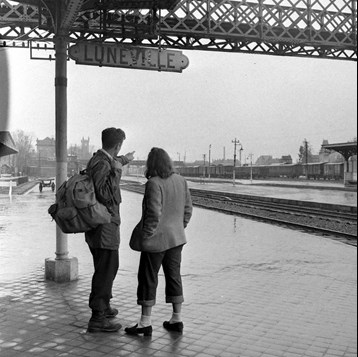
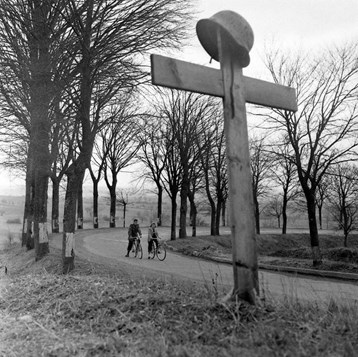
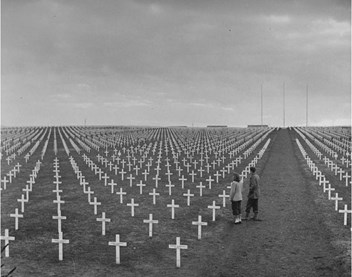
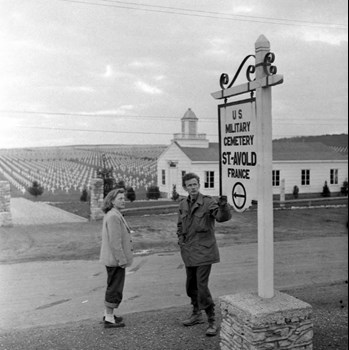
The Lorraine American Cemetery and Memorial in France covers over a hundred acres and contains the largest number of graves of military dead of the Second World War in Europe, a total of 10,489. Their headstones are arranged in nine plots in a generally elliptical design extending over the beautiful rolling terrain of eastern Lorraine and culminating in a prominent overlook feature. Most of the dead here were killed while driving the German forces from the fortress city of Metz, France toward the Siegfried Line and the Rhine River. Initially, there were over 16,000 Americans interred in the St. Avold region in France, mostly from the U.S. Seventh Army's Infantry and Armored Divisions and its cavalry groups. St. Avold served as a vital communications center for the vast network of enemy defenses guarding the western border of the Third Reich.
The final photos show the grave of Corporal Donald Brinkerhoff, Ernie's best mate, who was killed on 29 March 1945 near Weinheim during the battle to cross the Rhine. His grave is one among many in Lorraine American Cemetery. The liberation of Europe was costly, and today, as in 1947, their sacrifice is remembered.
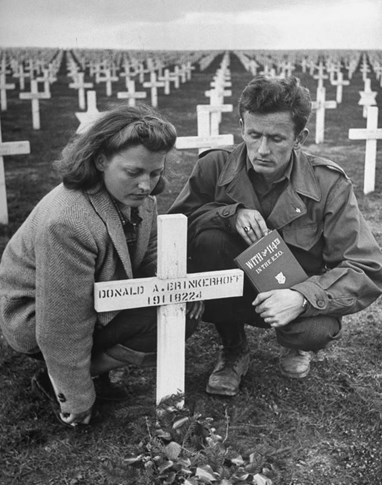
Of the 30 photographs selected to be shared here, all taken by the talented LIFE photographer Anthony Linck, I have chosen those that not only show the detritus of war or the war-ravaged landscape, but also just as important are those showing Europe recovering from those dark years. They show rusted barbed wire on the ridge west of Veho, the ridge Kreiling’s battalion had to take from the Germans. It was also the place where he captured his first prisoner. The jeep, now a wreck in the peaceful French countryside, is a stark reminder of the horror of war. The vehicle was in the process of taking away a casualty when it hit a mine. Knocked out Germany and US tanks, down aircraft and bomb craters dot the countryside, whilst many towns and villages still show the scars of the fighting. Those in the towns and villages welcomed the couple as they followed in the footsteps of the 114th. From hayloft at Lixheim where Ernie rested on Thanksgiving in 1944, hours before the Germans attacked the US positions to the train station at Luneville, post-war they were peaceful places. One of my favourite photographs are those of 69-year old local François Kratz who, over a beer, recounted to the visitors the bombardment on his village. Onward the 114th entered Germany, and soon the end of the war, on 5 May 1945.
A GI and his bride, what a wonderful time they must have had visiting the old battlefields of his Second World War.
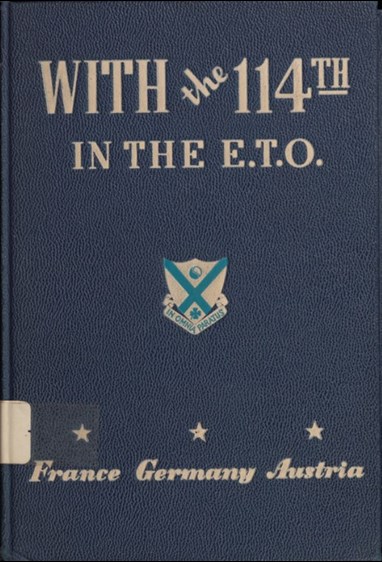
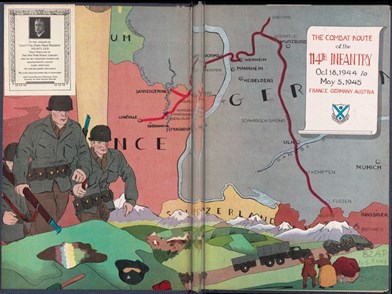
Notes:
Biography: Ernest was born on 23 October 1923 to Arthur and Florence Kreiling and raised in Peoria, Illinois, where he met his wife, Jean Vonachen in Junior High School. They were married on 31 July 1945 with his return from the Second World War. Post war he was T.V. syndicated columnist and critic and taught Telecommunications at the University of Southern California. He went to the University of Kansas and the University of St. Louis to learn German for future occupation. He attended Wabash College in Indiana, the University of Zurich, Switzerland and received a BA at Northwestern University. Ernest received his masters at USC. Ernest served in the Army from 1941- 1945 as a Staff Sergeant and was awarded a Bronze Star for bravery in action. In his retirement, Ernest enjoyed writing articles and speaking for AA and helped encourage and support many people. He passed away on 21 February 2008 in Palm Springs, CA, at the ripe old age of 84. His wife, Jean, passed away on 28 January 2010 at the age of 87. Jean, a year older than Ernie, went to Northwestern University in Evanston with Ernie, graduating with a business degree, before they moved to California. Raising two daughters, Jean was a real estate agent and broker, before she and Ernie retired.
Source: LIFE Magazine, Edition: 2 June 1947
- Title: Ernest Kreiling, Ex-Gi Tours Battlefields With Bride By Bike
- Publisher: TimeLife
- Photographer: Anthony Linck
- Credits: Life Magazine
- Copyright: © Time Inc.
